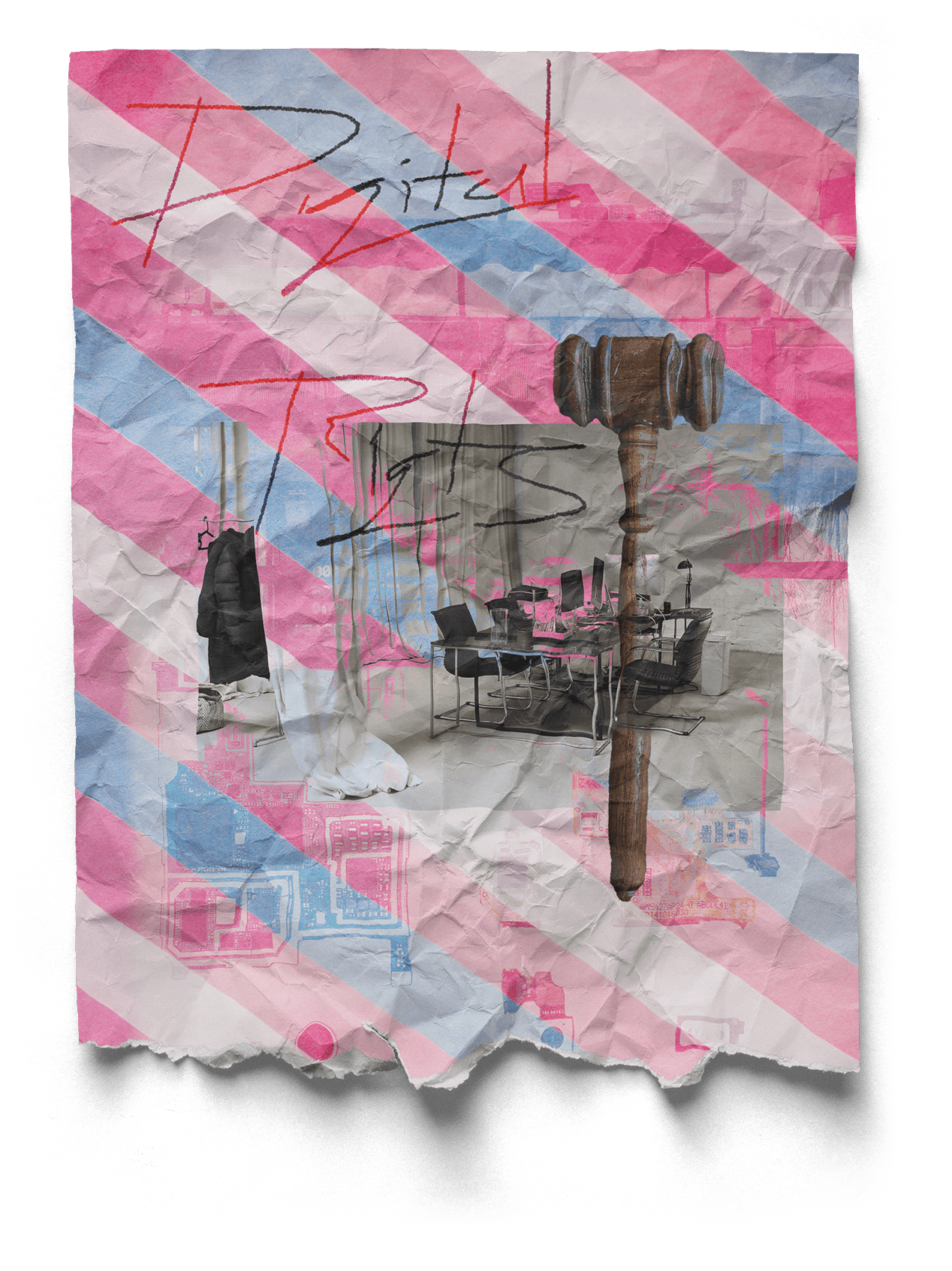Gay digital dating culture in Serbia 2


In this part of the article, we will go deeper into the analysis through which we came to different conclusions regarding the gay digital dating culture in Serbia.
Femininity/masculinity
X7: acquaintance with a not fem guy
The not fem (in Serbian nefem) refers to gender expression, that is, the user says that he is looking for an acquaintance with a guy of non-feminine gender expression. Although further analysis will problematize this approach to femininity, initially it must be noted that such approaches also have a subversive function to the extent that they denaturalize gender, i.e. separate femininity from the female body: If something is natural, then it would not be so easily subject to copying through ritual of repetitive actions: "Gender is a repetitive stylization of the body, a set of repetitive actions within a highly rigid regulatory framework that hardens over time to produce the appearance of a natural kind of substance" (Butler, 2011: 45).
X8: tap...no...no picture...fem...no
Here we see how the language of exclusion operates, the user uses the words "without" and "no" to emphasize the kind of men he does not want. In this case, it coincides with the exclusion of feminine men and those who are not ready to send their pictures, which will be discussed more later on.
X11: Ok, I'm normal, cultured, discreet, I'm in training, a strong athlete, not fem! For the same ones, only discrete, masculine, striking large, over 30+, other-stop, I do not respond if I am not interested, with due respect.
This user says that he is not a feminine, that he is looking for someone like himself, and he equates masculinity with something opposite to femininity, thus confirming the correlation between femininity and masculinity by which one concept is determined in relation to what the other is, i.e. in relation to what is not (Butler, 2010: 63).
X12: Can I find someone with balls??? Under 45, DON'T EVEN TRY. Any mature man over 45g for good banter??? Juniors, fem, passive do not need to report. I am a male and I identify as a male.
This user introduces a new term, which is "male". Masculinity refers to the biological body, and as we have seen in the examples above, masculinity does not necessarily derive from masculinity, that is, male bodies can also perform femininity. However, this user confuses the concepts of masculinity and maleness, and at the same time excludes "fem" men, thereby acknowledging their existence, and communicates that he wants relationships with males (actually referring to masculinity). The rougher tone of this profile description can also be interpreted as hostile towards men whose gender expression cannot be classified as masculine. This is supported by much research indicating that feminine individuals assigned male at birth are at greater risk of rejection and abuse than masculine individuals assigned female at birth (Kiebel, Bosson, & Caswell, 2019; Miller & Behm-Morawitz, 2020).
X22: For a sports figure, fan, kickboxer, MMA fighter. I'm rooting for macho characters
The user introduces the term macho, which can be described as a traditional form of masculinity, and its content is reflected in the professions and images that the user mentioned, i.e. there is a desire for men who practice violence, the user associates machoism with a tendency to violence.
Through the research of this topic, it was evident that there is a pervasive negative attitude, that is, the exclusion of femininity. This exclusion serves to normalize certain gay identities while making others undesirable. Although gay/bisexual men themselves are subordinated in relation to hegemonic masculinity, and because of homophobia they are often assimilated into femininity, the analysis of Grindr users, i.e. their profiles, indicates that they perpetuate the given gender order, i.e. there are subgroups within this subculture that are ranked hierarchically. Judith Butler sees the answer to the question of why there is a gender binary at all in forced heterosexuality: "The institution of forced and naturalized heterosexuality requires that gender appears in a binary relationship and regulates it as such, so that the masculine is differentiated from the feminine, and this differentiation is achieved through the practices of heterosexuality." desires" (Butler, 2010: 85). Heterosexualization of desire presupposes the unity of sex, gender and sexuality, whereby gender follows from sex, and sexuality arises from both: people have desire for that other gender through which they also distinguish and constitute their own (Butler, 2010: 84). However, we can see from the given examples that the binary oppositions of masculinity and femininity are maintained even when heterosexual desire is not present, i.e. masculine men can desire masculine men, and this does not in any way have to affect the gender binary and threaten the gender order in which femininity is less valued.
Active/passive
Almost all profiles indicate whether they are active or passive or vers, that is, what of these identities they are looking for from potential partners, so there will not be too many examples listed here, but the focus will be on the discussion of these terms and their relationship.
X4: Bottom for top
Passive for active
Combinations are also possible
X8: Top boy here. I am looking for power bottoms. 23 cm
Ravenhill and Visser (Ravenhill and Visser) confirm the existence of a connection between perceived masculinity and positions in sex - since all groups of participants rank active men as significantly more masculine compared to vers and passive ones: "The signifier "top" is perceived as the most masculine sexual self-signifier, and bottom as the least masculine. Gay men tend to see gay sexual self-signifiers as more masculine than straight men and straight women” (Ravenhill and Visser, 2017). So, among gay men, but even more so among straight men and women, it is a common belief that sexual behaviors also inform us about one's gender/gender expression. In other words, men and women of all sexualities believe that masculinity is threatened if a person submits to a receptive role in sex. This user destabilizes this simple top/bottom distinction and introduces the term power bottom, which refers to people in a receptive position who perceive their role as more powerful, as one in control.
This implies that to be in a receptive position in a sexual relationship is to lose control - which coincides with the long-standing notion that to be passive in sex is to be in an inferior and feminine position: "Michel Foucault documented the acceptance (and even glorification) and deep suspicion of homosexuality in ancient Greece. The general ethical polarity in Greek thought, between self-control and helpless satisfaction of appetite has, as one of its results, the structuring of sexual behavior in the context of activity and passivity, with the associated rejection of a passive role in sex" (Bersani, 2010: 18). So, being active in sex meant being in a position of authority, while being on the receiving end, i.e. being penetrated, meant giving up one's own power - it meant being subordinate, it meant being a woman (which tells us that the roots of homophobia can be found in misogyny).
X16: not fem passive
X17: bisex, gifted, for guys up to 33, bisex, passive, normal, not fem, outside these limits
These two users explicitly separate femininity from a passive role. As we can see, not only feminine men occupy a receptive role in sex, however, it is certainly more common, so it is evidently important for these users to separate those two categories. Therefore, the exclusion of feminine men is evident among both passive and active users.
In Bodies That Matter, Judith Butler writes about Plato's Timaeus, in which he says that penetration is a way of differentiating between "he" and "she". The positions of him and her are approached as mutually exclusive, where "he" is an impenetrable penetrator, and "she" is to be penetrated. Prohibition - its impenetrability, serves to stabilize the notions of masculine and feminine and represents panic about not being "feminized" (Butler, 2014: 51). In line with this, the Greeks treated only half of the men who had homosexual activities as politically unfit, while the other half profited from their practices and demonstrated their social superiority through them (Bersani, 2010: 39). Bourdieu also mentions these examples: "It is known that homosexual possession is conceived as a manifestation of power, an act of domination (which serves to feminize the other)" (Bourdieu, 2001: 21). However, such attitudes were not left in ancient times, but penetrate modern society as well: "Being gay, in patriarchal ideology, represents a set of everything that is symbolically thrown out of hegemonic masculinity, from picky taste in home decoration to receptive anal sex. Therefore, from the perspective of hegemonic masculinity, homosexuality is very easily assimilated into femininity” (Connell, 2014: 78).
Discretion and facial image
Many Grindr users choose not to show their faces on the app, meaning they keep their identities a secret. Taking into account the ubiquity of homophobia in Serbian society, this decision may seem self-evident, i.e., men do not want to expose themselves, that is, for their sexual practices to be known, but they want to enter into homosexual relationships. There is a tension between those who only want to make contact with people who post or send pictures of their face, and that group that strongly hides their identity: "Posting a picture of your face demonstrates an investment in a space that also shows your willingness to openly identify as gay or bisexual ” (Mowlabocus, 2010: 103).
X5: 1. Have/send face pics (without glasses)
2. Then ask questions
X6: Pictures then talk. Of course, you don't have to answer everyone. Be normal.
X14: you can see my face, so don't be a bitch and send yours if you contact me. If you don't have the balls, find someone else
The image of the face is related to the question of self-identification, honesty and integrity, and it can be concluded that among the analyzed profiles there are many who appreciate this way of self-representation. Moreover, one of the users says that he sees users who don't put pictures of faces as cowardly (he uses a misogynistic term here that has that meaning, don't be a coward, don't be a vagina, don't be a woman). The very use of the term indicates that gays can also be perpetuating the gender order and mistreatment of women.
X18: ok profile picture without face, privacy etc. But in the first message, a picture of a face and we talk. I don't like talking to stupid people
X19: Stay safe. I'd like to see who I'm talking to.
X20: Without a photo of a face in the 21st century, I'm missing pieces. Don't tap, don't write if you don't want to show your face.
Since they live in a homophobic society, it is certain that a certain number of users prefer to see the pictures of other users in order to give the impression of sincerity, i.e. the impossibility of any fraud that could result in wasted time: "For many users, face pictures represent a form insurance against fraud, i.e. the promise of what they can expect in real life" (Mowlabocus, 2010: 104). In addition, it is certain that many men have come out of the closet, and would view the return to total privacy as a regression (the user who mentions the 21st century implies this).
X1: Top character. Something fair and correct. No illness and frustration. I don't send face pictures and there is no discussion. If I don't answer, it means I'm not interested. Let's all know that the gay world is rough, so be ok. Fair player. Be grounded.
X13: Health first. I do not ask for/send a picture of the face. Maybe a 3-way with 2 partners. Get in touch for a quick response.
Because there is a narrative about the need to show your face, there are users who make it clear in their profile description that they will not share their pictures. So, this is about men hiding their identities for potentially different reasons. They can range from not wanting their sexuality to be known to simply not wanting their pictures to be made available to someone else and then potentially shared further on the internet.
X2: For action without much talk! Concrete and discreet! No fem.
X3: Healthy, good looking, 100% discreet, uni P, smoke friendly. Outside the circles.
X9: for occasional discretionary encounters
Finally, I will touch on the concept that implies that the user does not want the potential sexual partner to reveal his identity to anyone, but also that the given user will reciprocate that discretion, that is, he will not talk about who he had relations with. Discretion is partly related to not sharing photos, however, not in every case, since not sharing photos can be based on the desire not to send data, while discretion refers primarily to real space, i.e. these men want to hide their homosexual practices. Discretion refers to lack of autonomy and a high degree of autohomophobia, however, in the analysis of each topic, other socio-cultural differences of this non-homogeneous group should also be taken into account. That is, for example class differences can significantly affect the possibility of being out.







